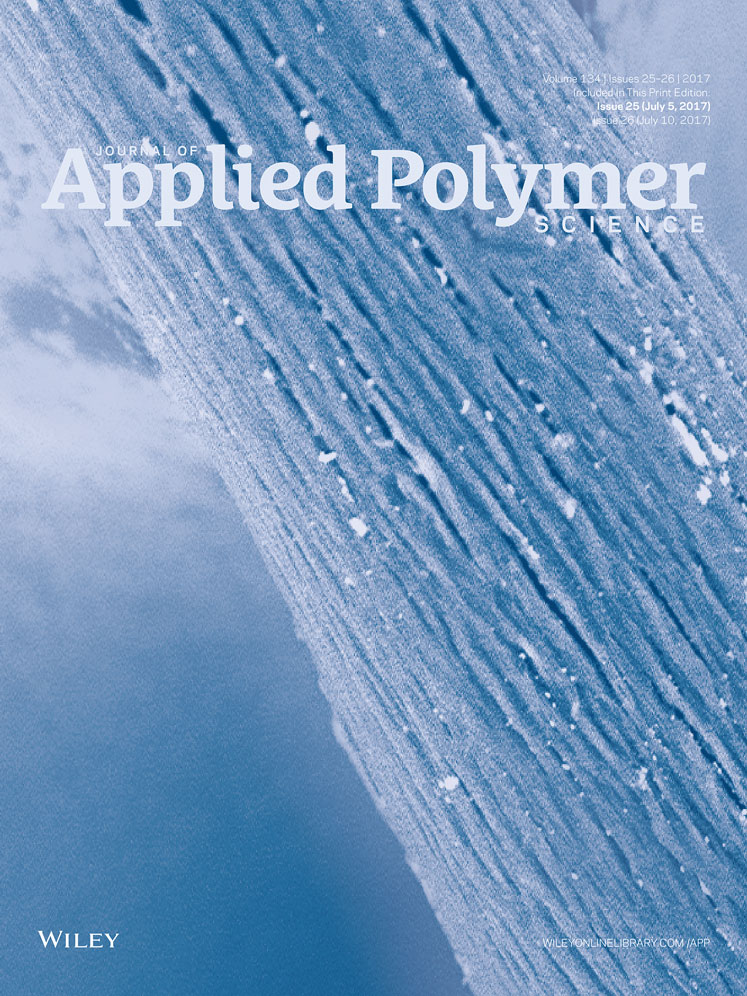Hydrophobic coating of mica by piranha solution activation, silanization grafting, and copolymerization with acrylate monomers
ABSTRACT
Hydrophobic mica particles were prepared by piranha solution activation, silanization, and copolymerization with acrylate monomers. Its surface morphology, hydrophilic properties, and thermogravimetric analysis changed differently in comparison with those of pristine mica. Scanning electron microscopy (SEM) showed that the modified (001) mica surface changed from flat to coarse. Thermogravimetric curves demonstrated that silane coupling agents and the grafted polymer were anchored on the modified-mica surface. The alternating surface polarity state was verified by different dispersion performances in the solvents. SEM images showed that the polypropylene (PP)/modified-mica composites had a better quality compatibility than the PP/untreated-mica composites. The PP/polymer-grafted-mica composites had improved mechanical properties, including stretching, tension, and impact properties. © 2017 Wiley Periodicals, Inc. J. Appl. Polym. Sci. 2017, 134, 44985.




